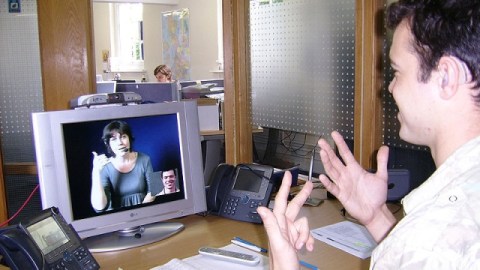Video Calls – Breakthrough in Communication for Deaf People

VoIP (Voice over Internet Protocol) and thus making video calls via services like Skype or Google Talk are already a well established standard in the tech community. According to a variety of reports it now looks as if video calls make their way into the mainstream. The iPhone 4 and Facetime give it another boost at the moment.
In online education, start-ups built around video lessons were the first on the market in late 2007. Most of them had a clear focus on language learning. It made a lot of sense as it is the easiest thing to realize. Connect a student with a native speaking teacher from the other end of the globe using video chat and later on the so called virtual classroom, a web meeting where student and teacher can work together using slides and writing tools. Interestingly, nearly all of the platforms missed a very interesting customer group that is now becoming more and more active in the video call space, deaf people.
The French language learning / teaching start-up Lingueo was amongst the first to notice that their service was ideal for teaching sign language and therefore included sign language as an own category on the platform in 2008, already.
Yesterday I read an article about the different ways the Internet brings people together. The part that caught my attention was the adaption of the iPhone 4 and Facetime amongst deaf people. Thanks to its front facing camera the iPhone 4 is the first mobile phone that they can use for making phone calls. All other devices before were just good for sending and receiving text messages. Using Facetime, deaf people can talk in sign language. This is a huge step. As an interesting side note, the person interviewed in this article stated that sign language is his mother tongue and German his second language, something obvious I had never thought about before.
But let’s take this a step further, looking back at my Big Think article on the future of travelling using your mobile device as personal interpreter. The next logic step in the evolution of controlling our devices is gesture. There are rumors that Apple, who else, is working on something in that direction, similar to the famous gesture based computer in the movie Minority Report.
What if the mobile phone or tablet could not only recognize click, pinch and swipe gestures but sign language? Combined with Google Translate Conversation Mode everyone of us could then understand sign language as the device translated it into English, German, French etc. And of course the device could then display what you answer in sign language on the display for the deaf person you are talking with.
Picture Source: Significan’t SignVideo




